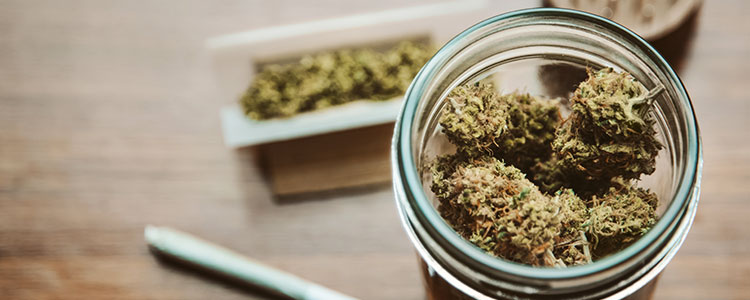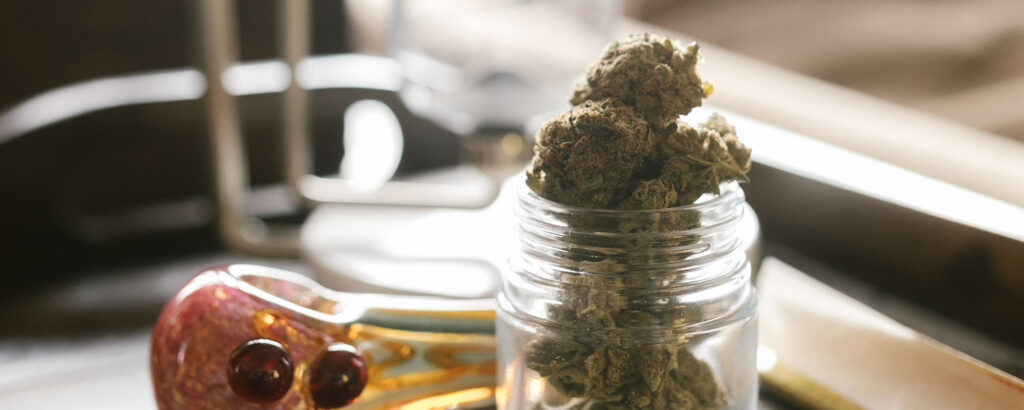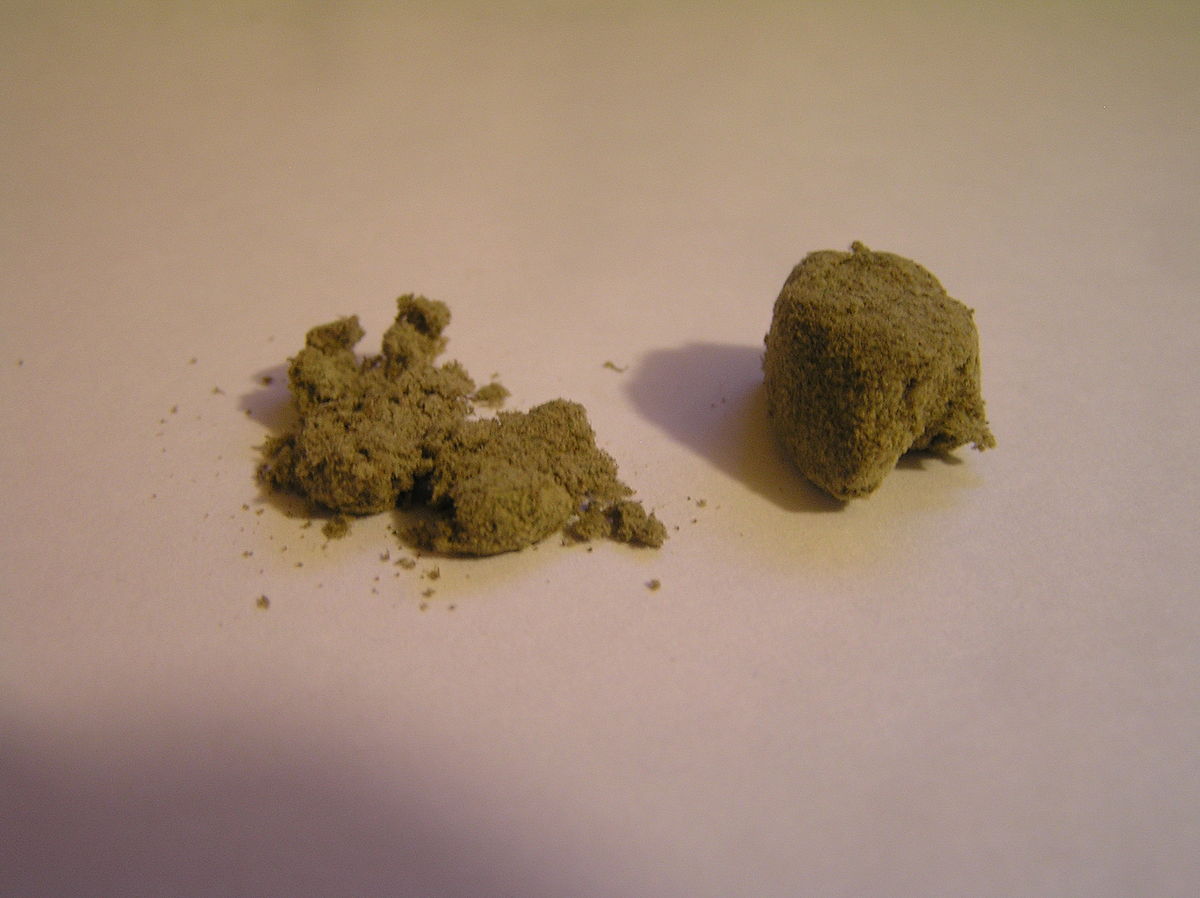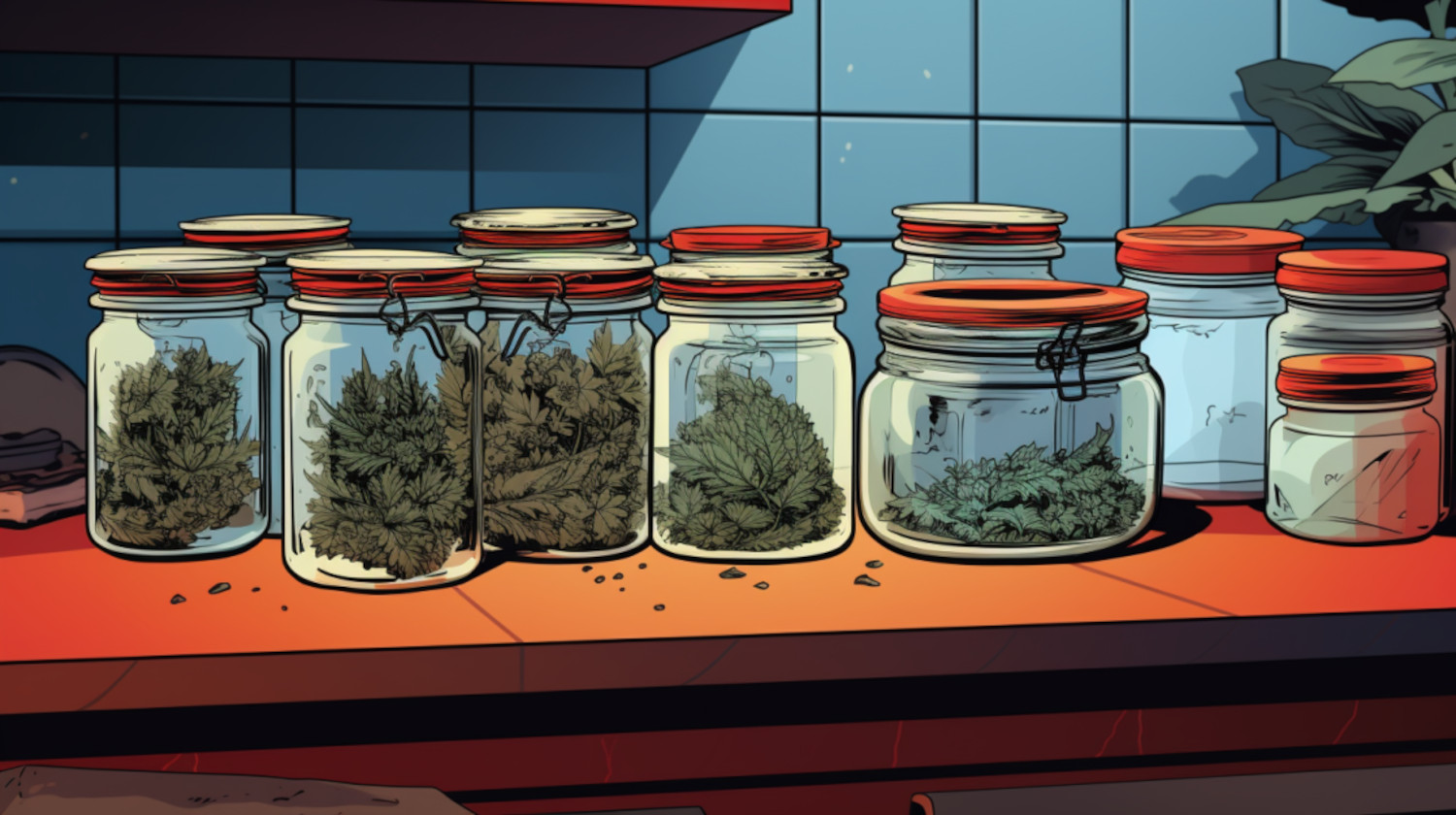Everyone's familiar with cannabis flower. After all, that's what everyone's after - those sweet buds covered in glistening trichomes packed with cannabinoids.
But what about the stems? Can you smoke those? Can they get you high, or should you just toss them in the garbage?
This article answers these questions and offers consumers four exciting ways to use leftover weed stems.
What Are Weed Stems?
Cannabis stems are precisely that - the plant stems that the cannabis buds (flower) are attached to.
They may or may not be attached to the bud you buy from the dispensary, and they'll look like yellow/green sticks that you'll need to pick the flower off. There are typically very small stems throughout a single cannabis nug that get ground or broken up when before you smoke.
Given that stems are part of the cannabis plant, you may wonder: do they contain THC?
Can Weed Stems Get You High?
Cannabis stems contain virtually no cannabinoids such as THC, CBD, or CBG. Therefore, you can't get high if you decide to smoke them.
However, saying that weed stems don't contain any cannabinoids isn't true. Lab results have shown that a typical cannabis stem could contain anywhere from 0.1% to 0.5% potential THC.1
In contrast, the average THC concentration of cannabis flower sold at legal dispensaries is between 20% - 30%.
So, while there isn’t nearly enough THC in cannabis stems to be worth smoking, that doesn't mean they're completely useless and should be thrown away.
More on that later. But first, can you smoke stems despite the low cannabinoid content?
Can You Smoke Weed Stems?

Running out of weed is never any fun – especially if you want to keep smoking.
In the moments after scraping the last bits from your grinder, you may have wondered: Can you smoke weed stems?
While it’s understandably tempting, you really shouldn't smoke the stems.
First, as we mentioned, they don't contain nearly enough cannabinoids to produce any effects.
More importantly, however, smoking cannabis stems could lead to several adverse side effects and risks to your lungs. Stem smoke tastes terrible, is incredibly harsh, and can quickly irritate your lungs.
There could be a variety of toxins, irritants, or carcinogens released by the combustion of weed stems, all of which can be hazardous to your lung health.
Smoking weed stems may cause some of the following undesirable side effects (all without the promise of any psychological or physiological benefits):
- Chest pains,
- Headaches,
- Sore throat,
- Coughing.
Can You Eat Weed Stems?
Sure, you can hypothetically eat weed stems.
This doesn't mean that they'll taste good, nor will it get you high for the same reason smoking them won't. That is, stems contain virtually no THC or other cannabinoids.
For some time, many people have claimed that you can get high from chewing on cannabis stems. But this, too, is not so. Any apparent effects from chewing on leftover stems are likely just from a placebo effect.
Still, as we mentioned earlier, a lack of THC or other cannabinoids doesn't necessarily make weed stems entirely useless.
Before you throw out your stems, consider what you can do with them first.
What Can I Do With Weed Stems?
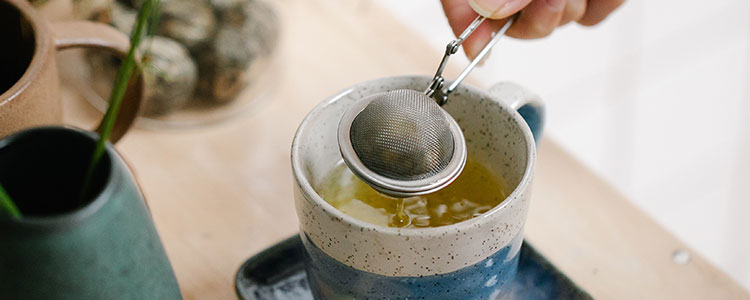
You can do a couple of exciting things with weed stems that are ultimately more productive than just throwing them in the trash.
Make Cannabis Tea
One of the best things to do with your weed stems is brew cannabis tea.
While your cannabis tea may not get you high using stems alone, they can make a solid supplement to your cannabis tea recipe.
Even if you don't want to add any cannabis flower to your tea recipe (or don’t have any left to add), stems still make a great cup of tea. Check out our recipe here.
Before the stems are ready for brewing, you'll need to decarb them first. Decarboxylation is the chemical process in which heat converts THCA to THC, which is actually the cannabinoid that gets you high. This happens naturally when you smoke weed, but when you're using excess weed or stems (or both!) to make your cannabis tea, you'll need to decarb them first.
Make Cannabutter & Edibles
Another great use of weed stems is making cannabutter and cannabis edibles.
Cannabutter, as the name suggests, is simply cannabis oil mixed with butter that can then be used to make a countless variety of edibles such as cookies, brownies, and more.
Typically, most people use cannabis flowers to make cannabutter - but nothing is stopping you from adding your leftover stems too!
While the stems likely won't add any overall potency to your cannabutter or edibles, they can help bring out a nice cannabis-tinged savoriness that can compliment your next dish.
Make Cannabis Topicals
Just as you can use stems to make cannabutter, you can also use leftover weed stems to create your own cannabis topicals.
Topicals are creams and lotions designed to be applied directly to the skin. Cannabis topicals are often used by consumers to moisturize skin, relieve muscle and joint pain, and alleviate sensitive skin conditions.
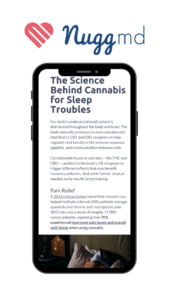
Fall asleep faster and wake up feeling more rested with our comprehensive (and completely free) patient’s guide to medical cannabis for sleep troubles.
Conclusion
Ultimately, it isn’t advisable to smoke weed stems.
They contain very little, if any, THC, CBD, or other cannabinoids – and consumers won’t get the effects they typically are seeking when smoking cannabis flower. Smoking stems can also be unpleasant and hard on the throat and lungs.
But there are plenty of better ways to use your leftover stems than tossing them in the trash—like making tea, edibles, topicals, or building your stockpile of kief.
Resources
- Jin D, Dai K, Xie Z, Chen J. Secondary Metabolites Profiled in Cannabis Inflorescences, Leaves, Stem Barks, and Roots for Medicinal Purposes. Scientific Reports. 2020;10(1). doi:https://doi.org/10.1038/s41598-020-60172-6 ↩︎
The information in this article and any included images or charts are for educational purposes only. This information is neither a substitute for, nor does it replace, professional legal advice or medical advice, diagnosis, or treatment. If you have any concerns or questions about laws, regulations, or your health, you should always consult with an attorney, physician or other licensed professional.

